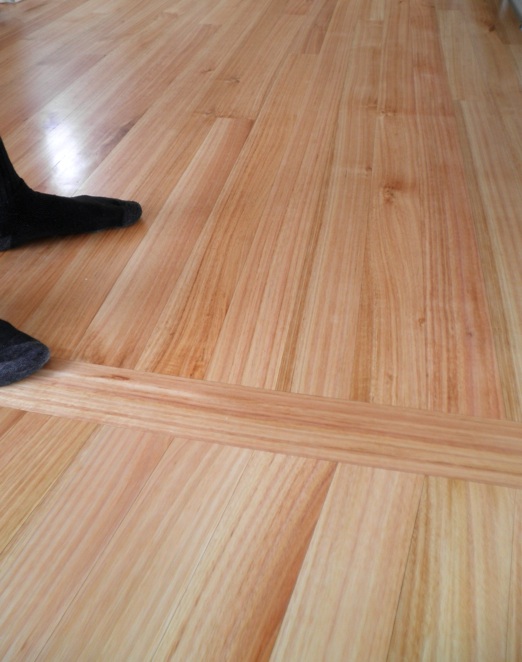Solid timber recovery and economics of short-rotation small-diameter eucalypt forestry
This report was prepared for Future Forests Research Ltd (FFR) by Scion.
Authors:
Dean Satchell, Sustainable Forest Solutions, R.D. 1 Kerikeri, Northland 0294. +64 21 2357554
James Turner, Scion, Private Bag 3020 Rotorua 3010. +64 7 3435899
Date: June 2010
Appendix 1: Assumptions in Discounted Cash Flow Analysis
Appendix 2: Prices and values of timber in New Zealand used for estimating board prices
Appendix 3: Timber grading
Appendix 4: Sawmilling methodology
Appendix 5: Glossary of terms
Spreadsheet 1: Kaingaroa Compartment 1194 E. regnans economic value (Microsoft Excel macro-enabled workbook 3.6 MB)
Spreadsheet 2: Optimal rotation and stocking for E. regnans (Microsoft Excel macro-enabled workbook 864 KB)
Treegrower article »
Executive summary
Eucalypt plantation forestry has not reached the production volume threshold necessary to establish specialised processing facilities and firm markets in New Zealand, despite strong consumer demand for imported hardwood timber. To establish grower confidence in planting eucalypts, research is required on which to base predictions of likely returns for plantations. This project addresses specific problems associated with grade-sawing younger, smaller-diameter plantation ash eucalypt logs in New Zealand. Sawing logs below 40 cm small end diameter (SED) is difficult primarily because of growth stresses. Seasoning of cold-climate eucalypt timber is also problematic, and issues such as collapse, surface and internal checking, cupping, distortion and high shrinkage can significantly lower product recovery and value. Despite these grade-limiting defects, when correctly sawn and seasoned, eucalypt timber can have attractive appearance, along with high strength and stiffness.

FFR Initiatives
In order to estimate returns for sawlogs within a mature industry and market, this study has simulated a vertically-integrated enterprise growing and processing small-diameter short rotation eucalypt. The resulting economic analysis is aimed at providing growers with information on returns for growing eucalypts for timber in New Zealand. If sufficient incentives exist then it may be possible for a viable eucalypt processing industry to develop.
This Project
Ninety-one 18-year-old Eucalyptus regnans (mountain ash) logs ranging in diameter from 25-43 cm were sawmilled in order to:
- Assess a specialised horizontal bandsaw sawmilling strategy developed for producing timber with minimal degrade from small- to medium-diameter cold-climate eucalypts;
- Estimate the net value of logs (conversion return) across the diameter range;
- Estimate the potential impact of tree stocking and rotation length on NPV (Net Present Value);
- Discuss the potential for innovative product options which could yield highest value from sawn eucalypt timber.
The primary objective was to evaluate the commercial potential for solid timber production from short-rotation, small- to medium-diameter, cold-climate eucalypt plantations in New Zealand. The estimated NPV for production of sawn timber and pulp from the stand used in this study was $10,292 per ha (internal rate of return 16.8%). Key contributors to this high value were:
- The large proportion of potential sawlogs within the stand - 61% by volume - arising from the ability to recover sawn timber from small diameter logs.
- A cost-efficient sawmilling strategy which produced high conversions to graded products.
- The high wholesale price allowed for E. regnans timber.
Nominal recoveries of sawn timber were recorded from all diameters milled, along with graded recoveries and processing costs. These provide a benchmark for evaluating potential returns for an emerging plantation industry.
Implications for FFR
By diverting smaller diameter logs (SED > 25 cm) from short rotation stands away from lower-value pulpwood to higher-value sawlogs, returns to the grower could be improved. However, sufficiently mature hardwood timber markets would need to exist at the time of harvest.
The results from the economic analysis of the stand used for the sawing study are sufficiently encouraging, with an internal rate of return well above that achieved for a typical radiata pine stand, and suggest that investment in growth model, volume and taper equation, and diameter distribution development is warranted.
Basic density, strength and hardness tests along with product development trials (such as finger-jointing) would give a better indication of market potential and value of young cold-climate eucalypt timber.
Next: Introduction »
Disclaimer: This report has been prepared by New Zealand Forest Research Institute Limited (Scion) for Future Forests Research Limited (FFR) subject to the terms and conditions of a Services Agreement dated 1 October 2008.The opinions and information provided in this report have been provided in good faith and on the basis that every endeavor has been made to be accurate and not misleading and to exercise reasonable care, skill and judgement in providing such opinions and information. Under the terms of the Services Agreement, Scion's liability to FFR in relation to the services provided to produce this report is limited to the value of those services. Neither Scion nor any of its employees, contractors, agents or other persons acting on its behalf or under its control accept any responsibility to any person or organisation in respect of any information or opinion provided in this report in excess of that amount.

 Farm Forestry New Zealand
Farm Forestry New Zealand

